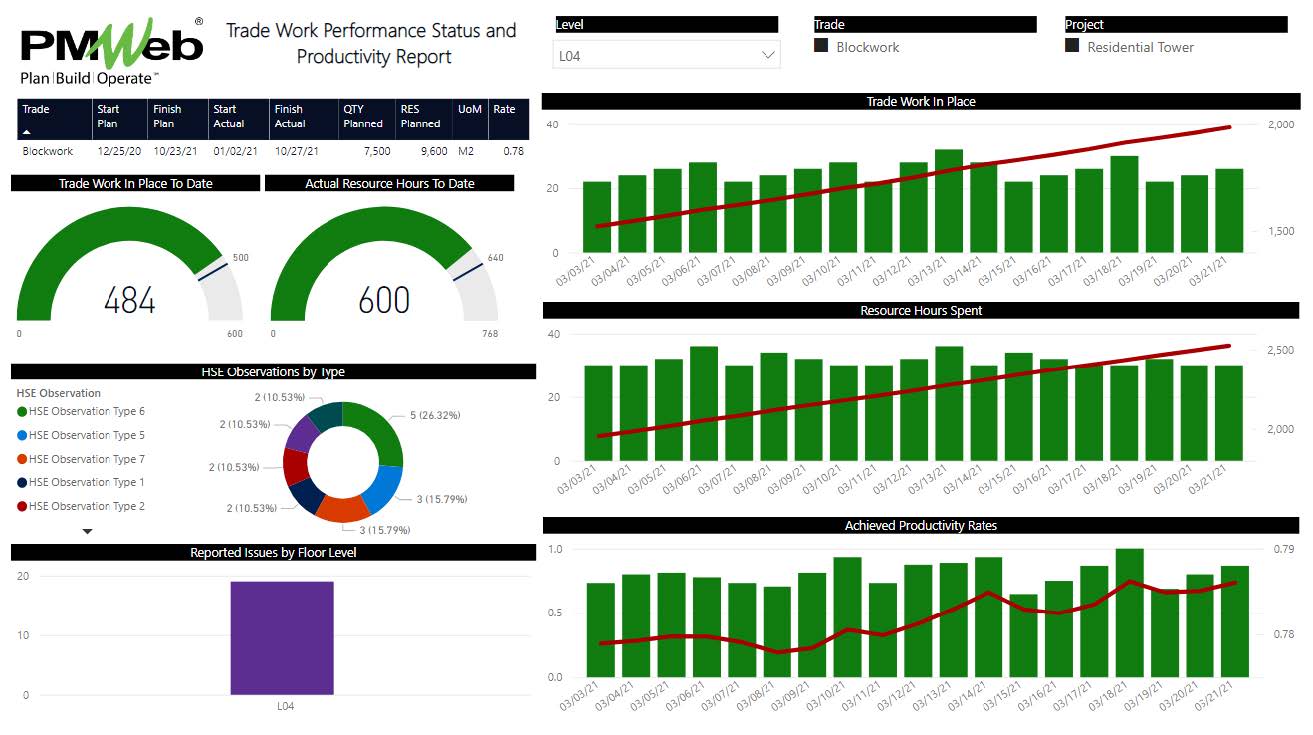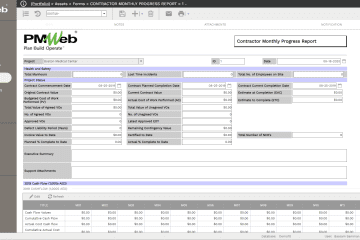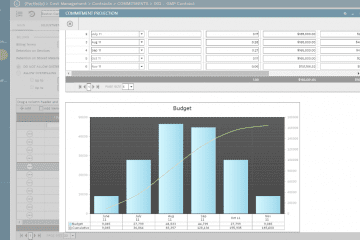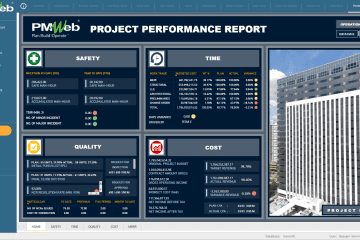For those who are involved in delivering high-rise buildings, residential housing projects, and other types of projects that have repetitive work trades, reporting the performance of finishes, MEP first and second fix and other types of key work trades is a requirement. The reporting also includes the reporting of planned and actual productivity rates for those work trades. Using the project schedule as the technique for providing this reporting not only can it prove to be impractical but also lacks the formal communication requirements required to document this performance. The integrated project schedule will be used to report planned start and end finish dates, actual start date and actual or forecast finish date, planned work in place, planned resources hours, and productivity rates.
The daily report which is a formal and a must requirement on every single capital construction project should be the process used to capture the trustworthy data needed for the work trade performance status and productivity reporting. It is the only trustworthy method to trace and track the source of captured and reported information to enforce transparency and accountability when it comes to reporting this information.
Using Project Management Information Systems (PMIS) like PMWeb, the daily report module is one of the many ready-to-use modules needed to manage capital construction projects’ business processes. Being a 100% web-enabled platform, either hosted on-premise or SaaS, allows the project team to access the daily report module, anywhere on the project site using any smart device with Wi-Fi or GSM connection. PMWeb HTML web responsive design will automatically adjust the daily report module screen to fit the smart mobile device being used.
Since there is no limit to the number of daily report transactions that can be done in PMWeb, therefore it is recommended to have a separate daily report for each floor as well as work trade or group of trades depending on who will be capturing daily progress data. In other words, each individual who has a responsibility to report daily progress must have his/her own daily report form. This is not only a requirement for enforcing accountability but also expedites and eases the process of capturing progress data.
In addition, the daily report needs to be aligned with the integrated project schedule data. The activities and WBS levels for the schedule will become automatically available for the daily report module once it is imported into PMWeb using the Schedule Link option. In addition, it is important to have standard naming and terminology for trades, labor, and equipment resources among others. Although the project schedule activities will rarely be detailed to the rooms or spaces level at each floor, nevertheless, if this was the case, then this also needs to be aligned with the location coding structure used in PMWeb daily report module.
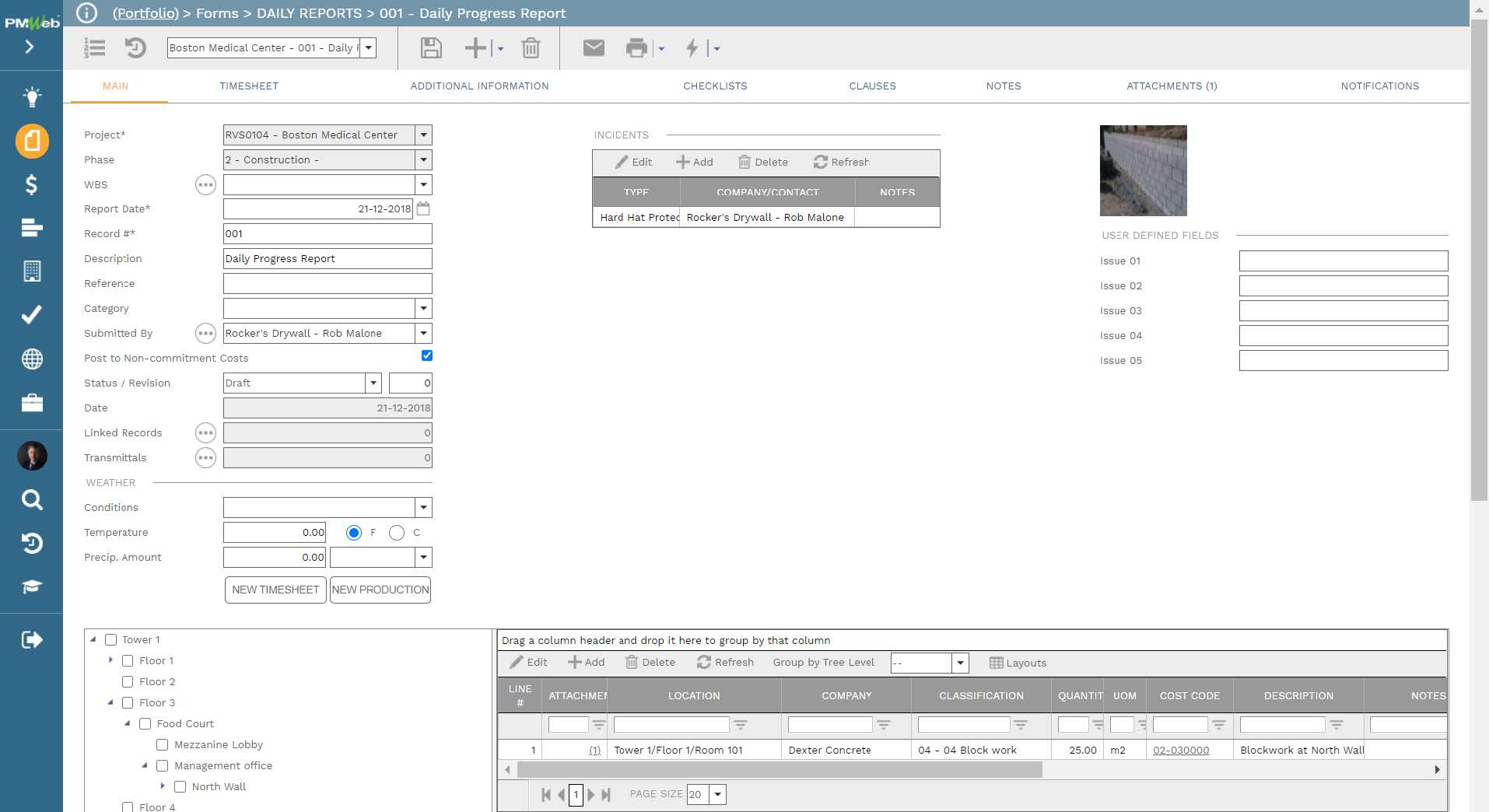
In addition to the captured work in place details for each work trade, PMWeb daily report module allows capturing the details of all labor and equipment resources associated with the completed work in place reported in the daily report. PMWeb also allows associating each reported resource with the project schedule activity it relates to, actual start and finish hours, whether those labor resource hours were normal pay, weekend pay, overtime pay, or any other type of pay used by the entity. For equipment resource hours, there is the option to add “Idle” as one of the pay items. The same “idle” pay type can be added to labor resources if needed to identify the labor resource status due to work stoppage.
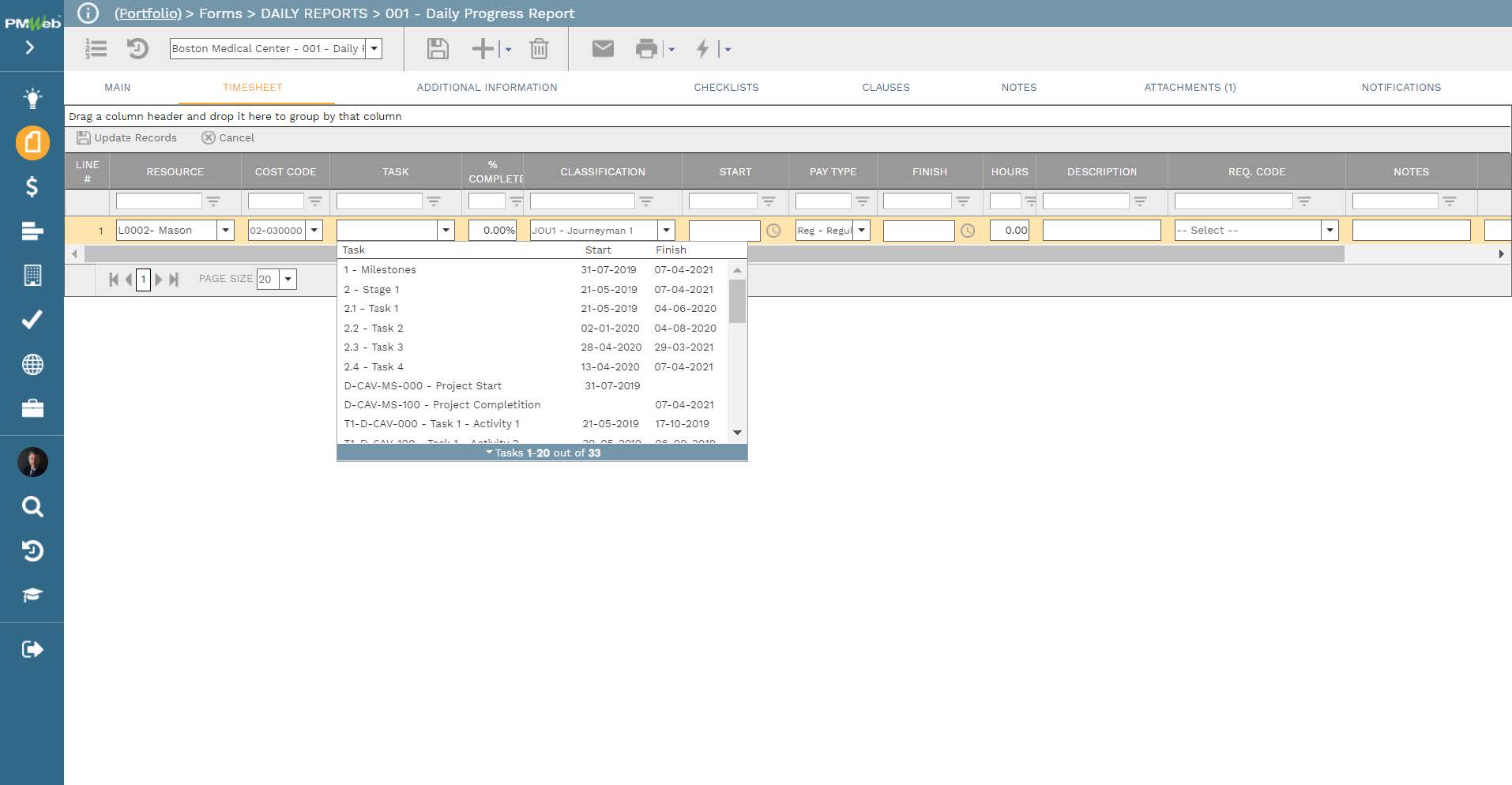
To ensure the credibility of the reported daily progress data, each reported work in place for each trade will be attached with on-site pictures to prove the reported progress. PMWeb will automatically prompt the user to either take a picture or video when the “Add Document” option is selected. Those pictures can be displayed on the daily report input form as well as output reports. All those supportive pictures must be uploaded and stored in their designated folder or subfolder in the PMWeb document management repository.
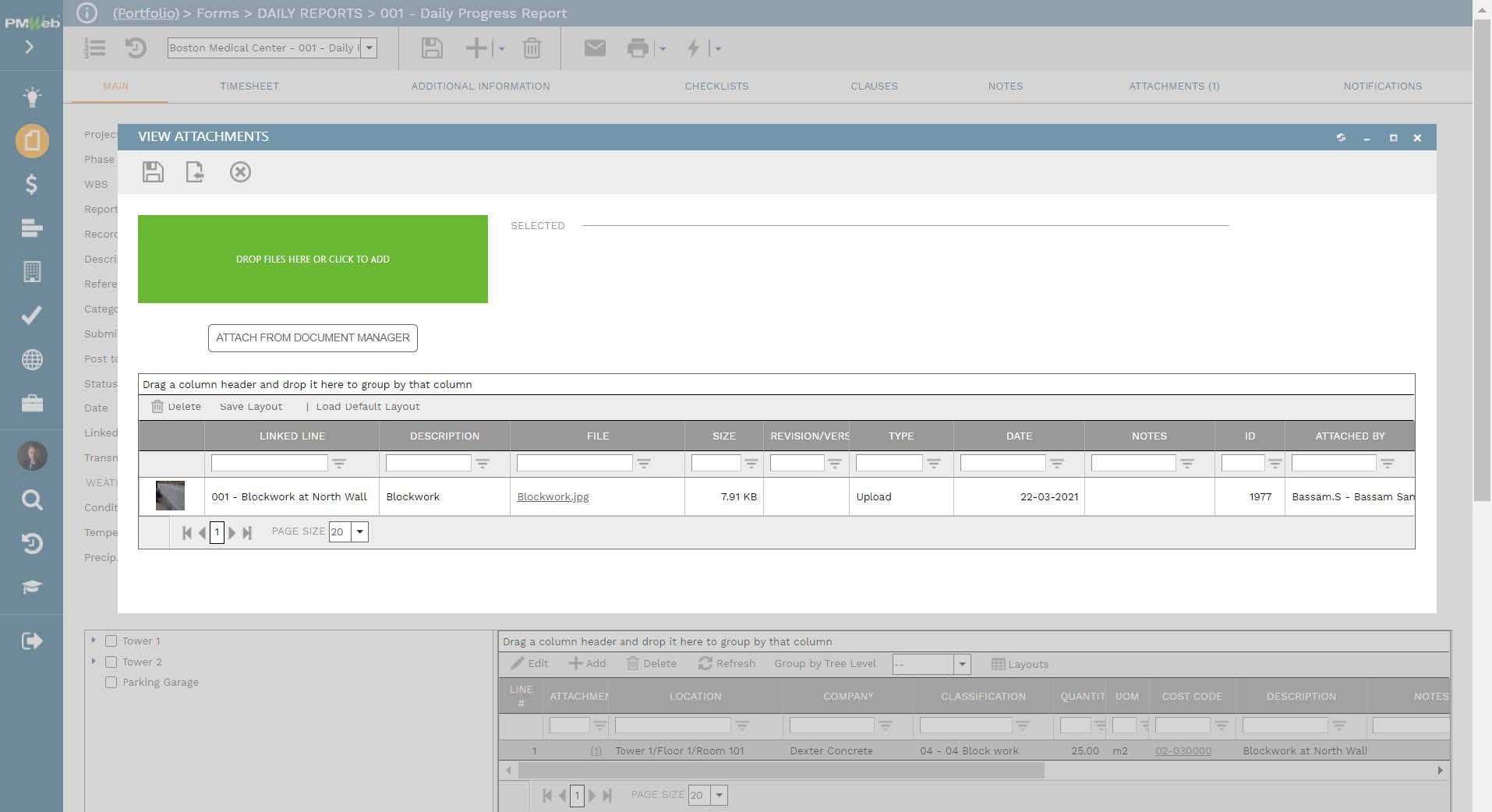
Although PMWeb comes ready with a safety accidents module in addition to the many other HSE input forms created using PMWeb custom form builder, the daily report module provides a concise table to report all HSE safety violation observations. This is important information as the HSE safety violations could have an impact on the reported work in place progress for that particular date.
The reported HSE observations will include the type of HSE violation which will be selected from a predefined list of values, the company name and the individual of that company involved with the reported HSE violation, and a brief description of the violation. The companies and individuals list will be selected from the data captured in the PMWeb companies module for which all entities along with their contacts will be added. Of course, pictures of all reported HSE violations can also be attached to the daily report form.
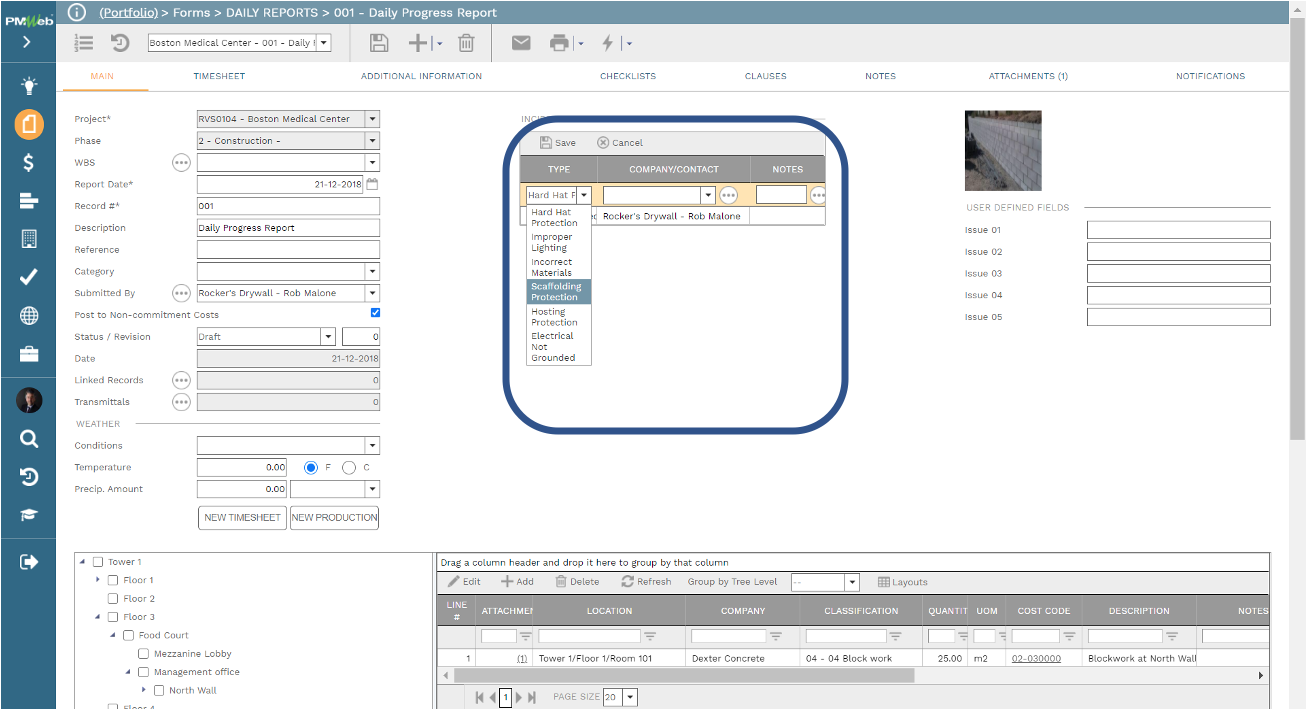
In addition to the reported HSE violations, the individual responsible for completing the daily report needs to report any issue that he/she believes is affecting or disrupting the actual work-trade progress. PMWeb user-defined fields option will be used to create the issues fields in the daily report module to enable capturing those details as soon as they are identified. Similar to the trade work progress and HSE violations, it is highly recommended to take pictures of those reported issues and attach them to the daily report.
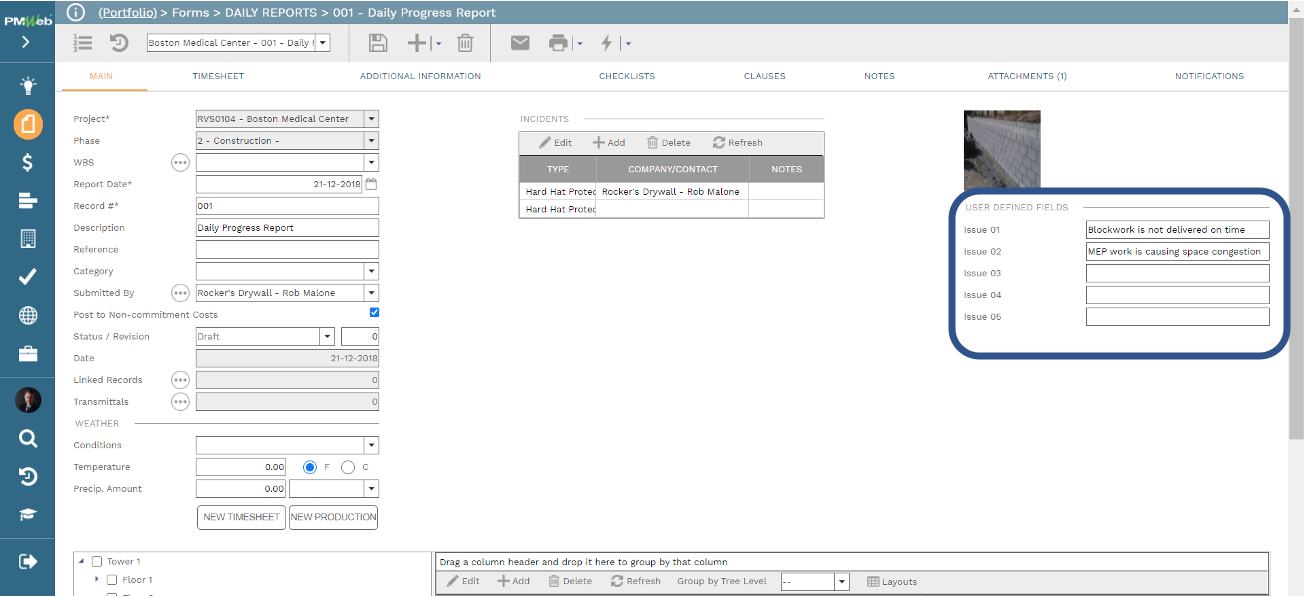
Since the daily report will be done by different individuals that could be representing different contractors and subcontractors deployed to deliver the project’s scope of work, those daily reports need to be formally submitted, reviewed, and approved by the designated project team members. Therefore, a workflow will be assigned to the daily report form to formalize this process. The workflow will identify all needed steps, the duration for each step, responsibility for performing each step, actions that can be taken for each step, and the sequence for performing those steps.
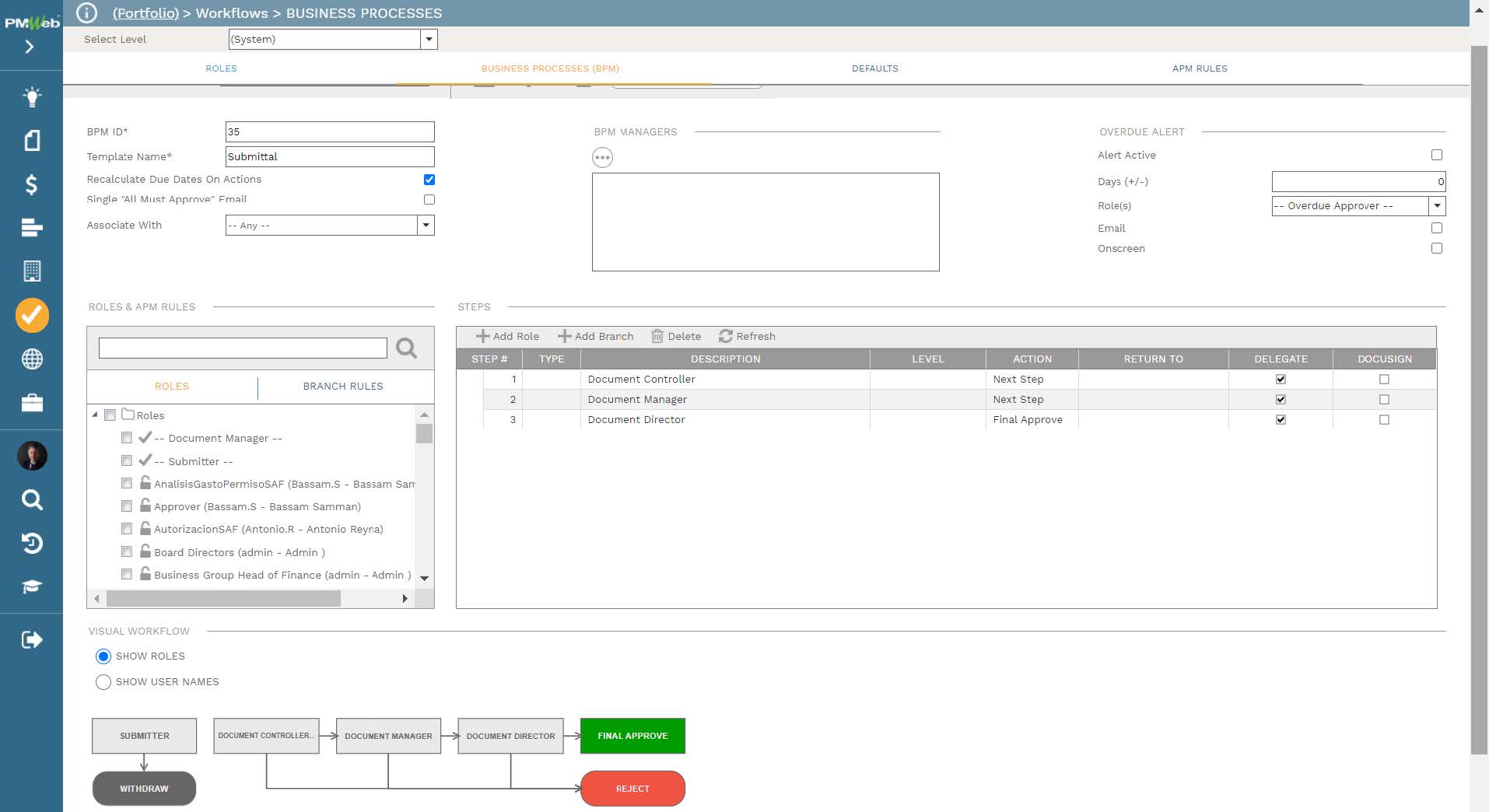
The trustworthy actual progress data for work in place and resource hours will become the basis for reporting the performance status and productivity for each work trade. The planned start and finish dates for each work-trade at each floor level along with the planned quantities planned production rates and associated resource hours will be captured from the Primavera P6 schedule. This will become the basis for establishing the planned work-trade performance and productivity rates at each floor level in a high-rise building or a housing unit in a housing project.
The Trade Work Performance Status Report is structured by trade, for example, Blockwork, False Ceilings, Paintwork, Ceramic Tile Flooring among others. The report is designed to display each trade work on a single page to avoid information congestion. The report has filters by floor level to display the information for a single floor or house, group of floors or houses, and all floors or houses. For each trade work, the report will have seven visuals. For the first two gauges, visuals both have a low limit of zero and a high limit of 120% of the total trade work planned quantities as well as planned resource hours. For the first gauge, there will be a target value to indicate the total trade work quantities as detailed in the project plan while the second gauge target value will be the total resource hours planned to execute the trade work quantities again as per the project schedule. The gauges will then become the basis for displaying the actual trade work quantities completed to date and the actual resource hours spent in executing those quantities. The 20% buffer for quantities and resource hours is added should the actual work in place and actual resource hours spent exceeds what has been planned for.
The report will include three histograms and line visuals for which each will show the daily value as a histogram and the cumulative values as a line. The first visual will be for actual trade work quantities per day and total to date, the second will for actual resource hours per day and total to date while the third will be for daily productivity rate and a horizontal line for average productivity rate to date.
In addition. the report will have a donut chart to detail the captured HSE observations by HSE violation type. In addition, a bar chart visual will be added to display the reported issues by floor level. The report will also include a summary table for the Trade Work name, planned start and finish dates for this work, actual start and forecast finish date, total planned quantity, total planned resource hours, and target productivity rate for the trade work.
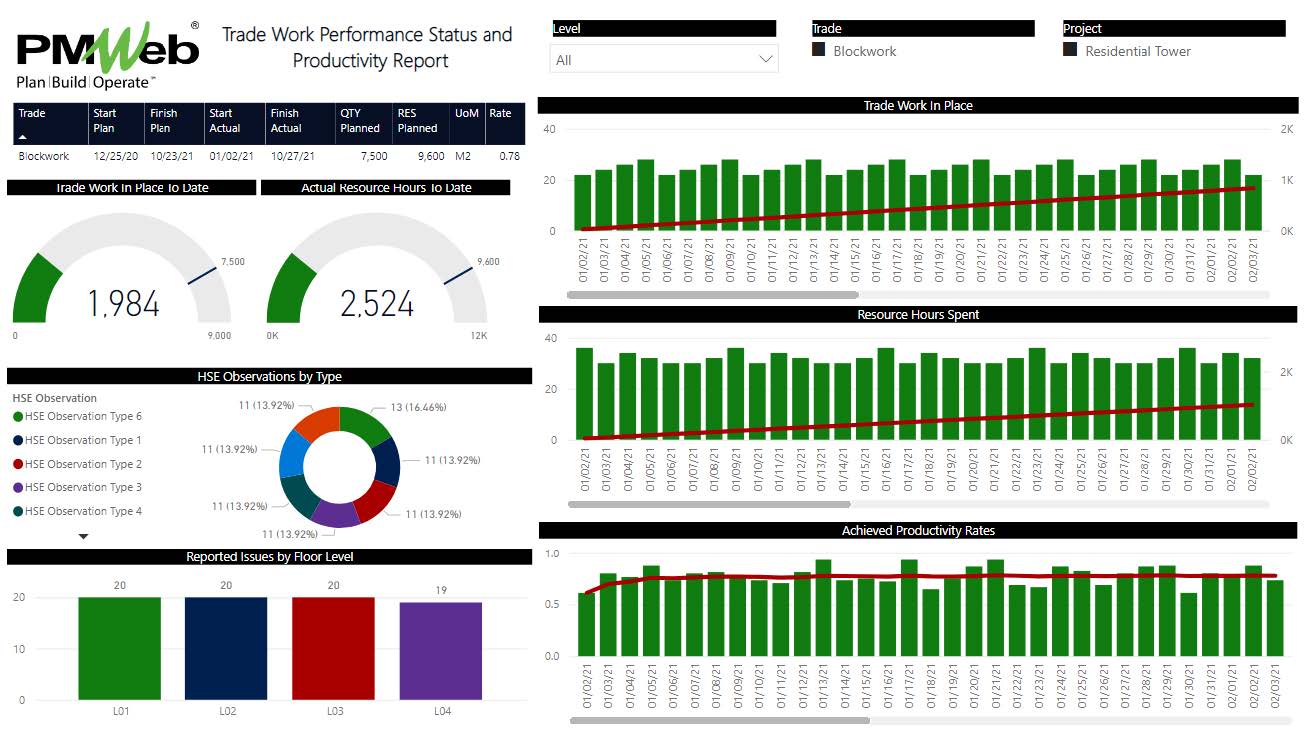
When a floor level is selected for a specific trade work, all visuals in the “Trade Work Performance Status and Productivity Report” will be automatically adjusted to display the information that is relevant to the selected floor level. The report reader can select more than one-floor level to report on when needed. A similar report can be generated for housing projects or any other type of projects that have repeated types of trade work at different locations.
